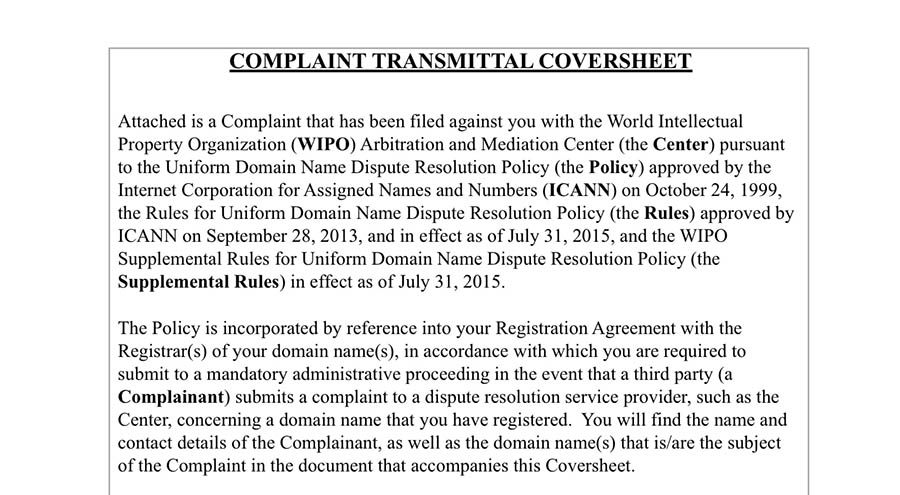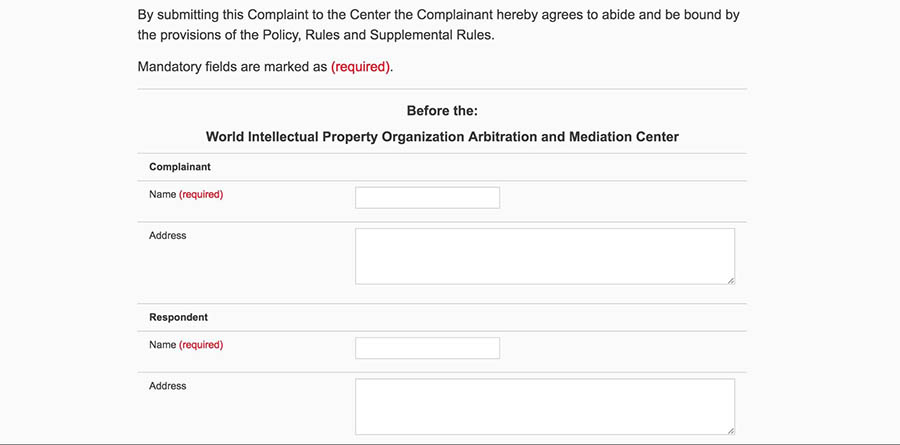Millions of websites are making use of unique domain names today. There are so many people using domain names for their websites that you may easily chance upon someone who may already own a domain name that is the same as your business’ and in fact, you may even have a trademark for that name. There are few instances where people may actually be using it just so as to squat on a business name to make a profit by selling it.
It is in such cases that you may have to file for a domain dispute. The procedure involves making an appeal to an independent arbiter with the help of the Uniform Domain Name Dispute Resolution Policy or the UDRP. With this policy, as a trademark holder you can claim domains that you have a right to use.
Understanding Domain Disputes
Domain disputes arise when different parties claim the right to use a generic-level domain name including .com, .org as well as .net. A typical example in this context is when a party is making use of a domain which has already been trademarked by another party, a practice we often give the name ‘cybersquatting’. Many parties do this only so as to divert traffic from someone’s website and disrupt someone else’s business. Another common practice is that of typosquatting. In this case, people may buy a domain that has a spelling similar to that of another, with only a slight variation in the way it is spelled.
One of the reasons why people tend to indulge in such practices is money by making claims to a domain name before the owners of the trademark get the chance to do so. Domain disputes may also arise out of malicious reasons. With the domain dispute process, all these cases can easily be resolved.
Working Of The Domain Name Dispute System
The Internet Corporation for Assigned Names and Numbers –ICANN created the Uniform Domain Name Dispute Redressal Policy in order to handle disputes for multiple claims to a given domain name. Usually if there is a case where someone else is making use of a domain name that infringes on the claims to a trademark or when there has been a purchase for a domain name for malicious purposes or in ‘bad faith’, then you may need to file for a UDRP for starting a proceeding for dispute settlement.
An independent arbiter authorized by the ICANN will be looking upon a given domain dispute. Arbiters may only be involved in disputes associated with top level domains registered under ICANN. Moreover, it may not be sufficient to hold a single proceeding of UDRP to settle disputes. You may also have to negotiate with the other party or the matter may also be taken to the court.
What To Do Ahead Of Filing For A Domain Dispute
In order for your domain dispute to succeed, as a claimant, you will have to ensure that you are able to prove certain things. The domain name over which the dispute has arisen, is either identical or too similar to a service mark or a trademark on which you are claiming rights, or it was registered and is now being used in bad faith or in the respect of the domain name, the domain owner holds no rights or legitimate interests.
What Is Included Under ‘Bad Faith’
Bad faith essentially covers those circumstances where the domain owner acquired a given domain name only with a view to sell, rent or transfer the domain name to the owner of the trademark in an excess of the amount that was initially spent in purchasing it. Bad faith also constitutes cases where the domain holder acquired a domain name only so as to cause disruptions in your business or with a view to attract users to a given site for making commercial gains. Bad faith also includes cases where attempts are being made at preventing the mark from being reflected in a trademark.
Starting A Domain Dispute
The domain dispute process has been made easier with the help of a Model Complainant form. An online version of the form is also available and can be found on the website of WIPO. There are several sections within the form, in which the required fields are clearly marked. In the first section of the form, you will have to fill in your details, as well as those of your respondent and the domain that is disputed.
Online version of the Model Complainant form
In the form, you will also have to give the name for your representative and provide your contact details. Details regarding the registrar involved in making the acquisition, the disputed domain and the date around which this was done will also be required.
Mandatory sections in the Model Complainant form need to be duly filled up
You may also fill up the optional sections in the form. After having filled up all these sections, you will also have to give the factual as well as the legal basis for the right to use given domain (s). With regards to the domain, you also have the option to specify the action you are expecting should be taken against the respondent. The other sections including communications, payment, certification, mutual jurisdiction and few other sections also need to be carefully filled out. At the end, you will have to sign and make a confirmation on your claims.
Moral Of The Story? Prevention Is Better Than Cure.
Platforms such as Shopify allows you to buy a domain name at the best possible prices. If you own a business but haven’t booked your domain name, now is the time! Even if you don’t have plans of taking your business online yet, or setting up a full-blown website, it’s a good idea to purchase and reserve your domain name beforehand, to prevent the chances of others potentially squatting on it.

